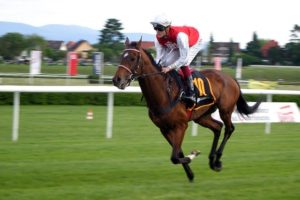Sometimes all your best plans just don’t work. Punters probably thought that when watching the Prix de L’arc de Triomphe on October 3. Torquator Tasso was the winner at Longchamp with astonishing odds of 80/1. This was no run-of-the-mill race, it had some of the best horses in the world taking part. With the Breeders’ Cup being held next month, how can you pick some winners?
Hindsight is a wonderful thing. That’s what is always said after when a winner that delights the owners of sportsbooks occurs. Those thoughts you never had when considering who to bet on, suddenly appear when you look at the form of the long odds winner.
You see, trainer Michael Weiss had been targeting his runner for the Arc for his runner all year. That’s always a sign you must have to look out for when trying to pick winners. The Arc winner had also shown good form on soft ground. The more rain the better and that played into his hands. See, it all makes sense for gamblers after the race.
Attention now turns to the USA for the Breeders’ Cup meeting at Del Mar on November 5 and 6. This is labelled the World Championship of Horse Racing with millions in prize money. Betting on this two-day meeting will also run into millions of dollars with a series of top races.
The Breeders’ Cup races will be highly competitive. That’s not surprising at all considering the sheer class of the runners. If you want to get some winners, perhaps one with high odds, then research is the key word. Also, to maximise wins, look out for the best horse racing betting offers.
Current form is of course important when you are trying to work out your selections. However, picking a horse just because it has won three or four races in a row isn’t the answer. You need to look at the class of the races those wins have come in.
It may be a horse has been being opposition weaker than those it is now about to face. Alternatively, a horse that has been struggling may now be up against lower-class opposition.
There are so many factors that need to be taken into consideration. The distance of a race is of great importance when considering your wagers. It often takes a few races to work out the best distance a horse should run at. It’s not just the punters that have a gamble.
Trainers must decide If a horse will run better at a longer or shorter distance. Take Echo Zulu in the Breeders’ Cup Juvenile Fillies race. This runner has had two races and won them both, so you might fancy betting on the favourite. The race is being run over a mile and Echo Zulu has never raced over such a long distance.
You need to look at how the previous races have been run. The last race for Echo Zulu was run over seven furlongs. The report of the race says that he was “pushed out comfortably” so racing over an extra furlong shouldn’t be a problem. That adds confidence to the bet you may place.
The same situation happens when a horse goes down in distance. For example, Love who pleased her backers by winning the 2020 Epsom Oaks has been tried recently over 10 rather than 12 furlongs. If the form shows a horse has been weakening towards the end of a race, a drop in distance may be made and that could bring about a better run and a win at good odds.
The ground that a horse is best on is an important piece of information to know Just as Torquator Tasso revelled in the heavy ground at Longchamp, other runners might have hated that and put in a sub-standard performance.
Anyone who watches American horse racing will know the ground will be important in the Breeders’ Cup. Not every race you see is ran on turf. There are several that are run on dirt and that makes making your selections a bit more difficult. American horses will be used to running on that surface, not so much the European raiders. Look to see how your selections have won on dirt.
How long is it since your intended selection has had a race? Some horses need a run to regain top form if off the track for a while. However, there are others that can be off the track for a long time but run well when fresh.
Some horses have already met each other in races either this season or in the past. Look at these races to see how they got on. One horse may have lost in the past to a rival but may have been hampered and have a good chance to get revenge.
The Breeders’ Cup takes place in November. This must be taken into consideration, especially for European horses. They will have had a long season and it is always possible that the trip to the USA may be one race too many for them. Hopefully, that won’t be the case when Tarnawa bids to defend the Breeders’ Cup Turf title
Whatever your choices, make sure you gamble responsibly but choose horses for their ability not because you like their name. Research can take some time, but a win is always worth it in the end.



